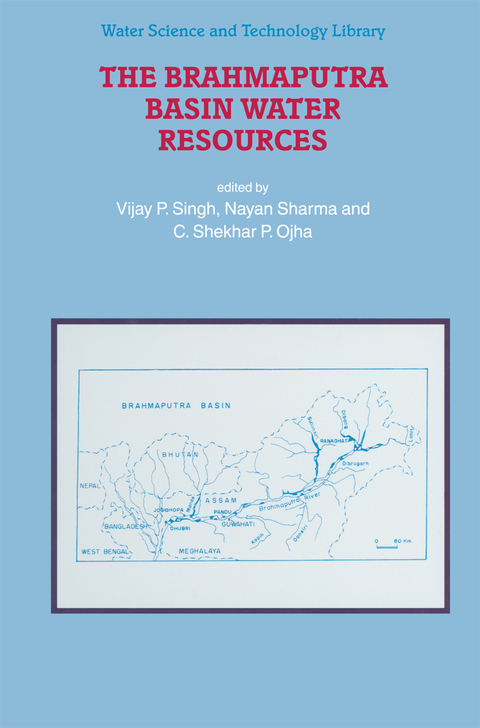
The Brahmaputra Basin Water Resources
Springer (Verlag)
978-90-481-6481-3 (ISBN)
The Brahmaputra River is a precious gift of Nature to India and especially to its northeast region. The meaning of this gift becomes evident immediately when one considers the vastness of water resources which the Brahmaputra River basin possesses. Nearly 30% of India's water resources potential and 41% of the country's total hydropower potential are found in this basin. In terms of the average discharge, the Brahmaputra River is the fifth largest river in the world. Traversing a distance of about 2,900 kilometers from Tibet at an elevation of 5,150 meters to the Bay of Bengal and draining an area of nearly 1. 6 million square kilometres shared by Tibet, India and Bangladesh, it has shaped the social, economic, cultural, religious, political, and linguistic fabric of the northeast region of India from time immemorial. Its majestic disposition is nothing short of poetic. The northeast region has a colourful ethnic and non-ethnic population and represents almost a miniature India. Its biodiversity of flora and fauna and other natural ecosystems is unsurpassable. The northeast region of India is endowed with enormous natural resources and the huge potential of the Brahmaputra River basin. These resources notwithstanding, this part of India remains woefully underdeveloped. The current state of low development of the northeast region can arguably be attributed to a multitude of factors.
1: Introduction.- 2: Weather and Climate.- 3: Hydrometeorology.- 4: Soils and Agriculture.- 5: An Overview of the Brahmaputra River System.- 6: Fluvial Geomorphology.- 7: Hydrogeology.- 8: Hydrology.- 9: Channel Processes.- 10: Spatio-Temporal Morphological Features.- 11: Mathematical Modelling and Braid Indicators.- 12: Hydraulic Structures.- 13: Scour Around Spurs at Gumi Site.- 14: Water Resources Planning.- 15: Brahmaputra Flooding: Problems for Administration and Prospects.- 16: The Brahmaputra in Assam’s Economy.- 17: Financial Constraint in Assam.- 18: Society in the Brahmaputra Valley.- 19: Ecology.- 20: Wetlands and their Role in the Geo-Ecological Environment.- 21: Water Quality, Mineral Transport and Sediment Biogeochemistry.- 22: Cropping Systems.- 23: Ground Water Development.- 24: Irrigation Development.- 25: Development of Power.- 26: Navigation Development.- 27: Transport Infrastructural Scenario.- 28: Flood Management.- 29: Remote Sensing and GIS In Flood Management.- 30: Seismo-Tectonic and Earthquake Design Parameters.
| Erscheint lt. Verlag | 9.12.2010 |
|---|---|
| Reihe/Serie | Water Science and Technology Library ; 47 |
| Zusatzinfo | XVI, 613 p. |
| Verlagsort | Dordrecht |
| Sprache | englisch |
| Maße | 155 x 235 mm |
| Themenwelt | Naturwissenschaften ► Biologie ► Ökologie / Naturschutz |
| Naturwissenschaften ► Geowissenschaften ► Geologie | |
| Naturwissenschaften ► Geowissenschaften ► Hydrologie / Ozeanografie | |
| Naturwissenschaften ► Geowissenschaften ► Meteorologie / Klimatologie | |
| ISBN-10 | 90-481-6481-8 / 9048164818 |
| ISBN-13 | 978-90-481-6481-3 / 9789048164813 |
| Zustand | Neuware |
| Informationen gemäß Produktsicherheitsverordnung (GPSR) | |
| Haben Sie eine Frage zum Produkt? |
aus dem Bereich


